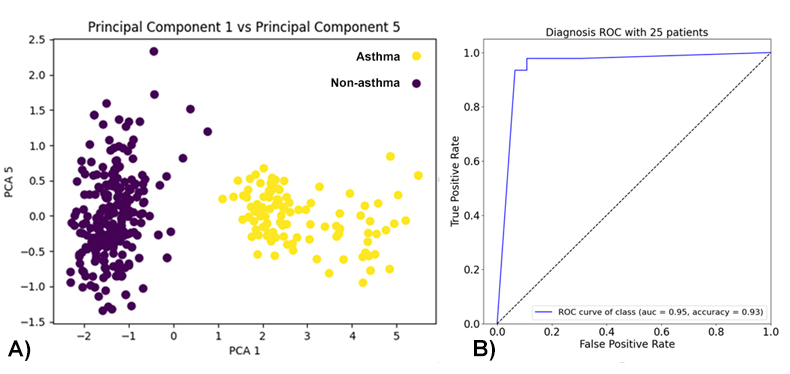Abstract
Background: Asthma is mainly diagnosed principally based on a careful clinical history taken by a clinician. There is a significant unmet need for a non-invasive, easy-to-use tool that can be used in the diagnosis of asthma.
Aims: Our groundbreaking aim is to revolutionize asthma diagnosis by developing a revolutionary POC breath test that employs deep neural networks (DNN) and nanosensors for early detection.
Methods: We collected VOC biomarkers, capnographic waveforms, asthma control test scores and clinical lung function parameters, from 25 patients. 15 people with a primary care diagnosis of asthma and 10 people without asthma with no history of respiratory disease were included.
End-tidal breath samples were collected, and 13 different parameters were measured using nanosensors. Principal component analysis (PCA) was used to identify parameters whose values will control the algorithm?s learning (Figure 1A).
A 13-layer multiclass classification DNN with 2 outcomes (1 non-, 2 asthmatic) was trained with 688 data points containing the patient data, biomarkers and lung function parameter range to achieve a big data approach.
Results: Our model achieves 93% accuracy and a high AUC of 0.95 (Figure 1B) in accurately diagnosing individuals with asthma.
Conclusion: Exhaled biomarkers holds potential in distinguishing asthma patients from healthy individuals, with the aim of enhancing asthma diagnosis.
Fig 1: A) PCA key parameters B) ROC of DNN results
